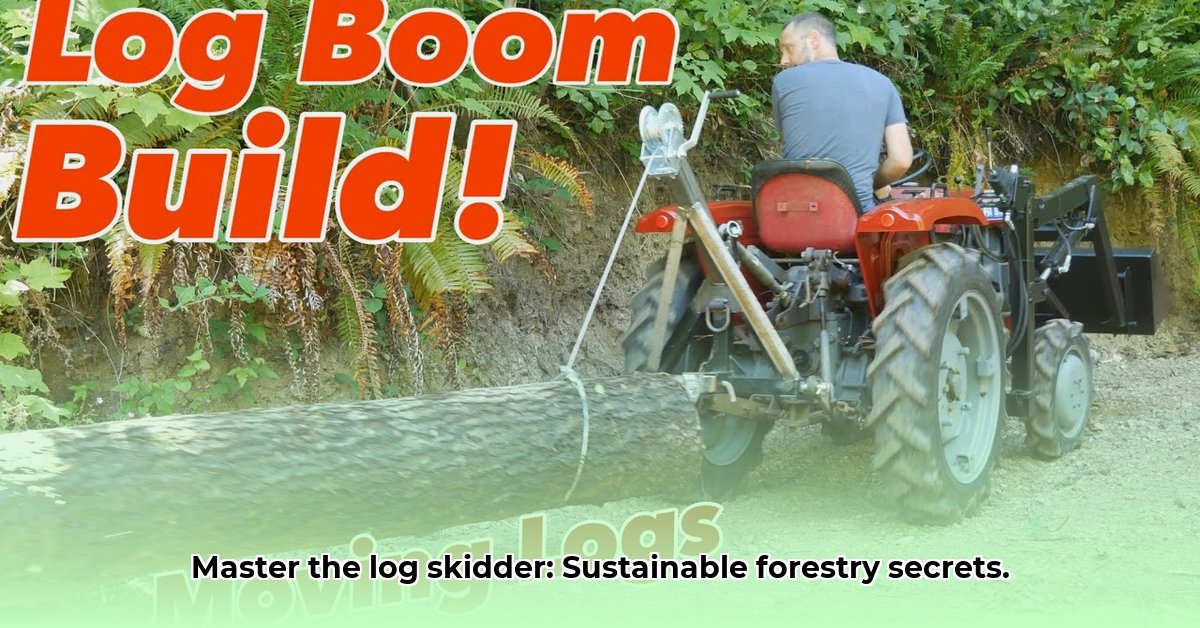
Understanding Tractor-Based Skidding Winches and Their Role in Sustainable Forestry
Tractor-based skidding winches are heavy-duty machines revolutionizing sustainable forestry practices. Unlike traditional methods that drag logs directly across the forest floor, causing significant soil compaction and erosion, these winches utilize cables to pull logs, minimizing ground disturbance. This approach preserves delicate ecosystems and promotes healthier forest regeneration. The increased efficiency also translates to lower operating costs and faster turnaround times. Different winch types exist, ranging from manual to wireless control systems, each offering unique advantages depending on operational demands. For more on conventional tractors, see this page. Do you see the potential for increased efficiency and reduced environmental impact in your own logging operations?
Selecting the Right Skidding Winch: Key Specifications to Consider
Choosing the right skidding winch is crucial for optimal performance and safety. Several key specifications must be carefully considered:
Winch Capacity: This refers to the maximum weight the winch can pull (measured in pounds or kilograms). Overestimating your needs is generally preferable to underestimating, ensuring you can handle heavier loads when necessary. However, selecting a winch with significantly more capacity than needed leads to unnecessary cost.
Cable Strength: The cable's strength (measured in tensile strength) is critical for preventing breakage and ensuring safe operation. A stronger cable provides greater reliability, but it also increases cost.
Hydraulic Requirements: The winch's hydraulic system must be compatible with your tractor's hydraulic output. An underpowered system will severely limit the efficiency of your operation; an overpowered system is often unnecessary and more costly.
Grapple Size: The grapple is the mechanism that clamps onto the logs. Its size directly influences handling efficiency, particularly when dealing with various log sizes.
Terrain Suitability: Winches are designed for different terrains. A winch suitable for flat land will struggle in steep or rocky areas.
Unfortunately, comprehensive comparative data on various winch models is limited. Thorough research, including consultation with manufacturers and review of user feedback, is essential for making an informed decision.
Safe and Efficient Operation: Best Practices for Success
Prioritizing safety during winch operation is non-negotiable. Before each use, a comprehensive pre-operation check is mandatory. This includes:
- Cable Inspection: Check for fraying, kinking, or any signs of damage. Replace damaged cables immediately.
- Hydraulic Fluid Levels: Ensure proper fluid levels to prevent hydraulic system damage.
- Winch Functionality: Test the winch to ensure smooth and reliable operation.
- Brake Inspection: Thoroughly inspect and test the braking system. Malfunctioning brakes pose a significant safety risk.
- Structural Integrity: Examine the winch and its mounting for loose bolts, leaks, or any structural issues.
Proper log attachment techniques are critical to prevent logs from slipping or falling during extraction, potentially causing damage or injury. Following established safety protocols, including the use of appropriate Personal Protective Equipment (PPE), is essential for mitigating risks. The use of PPE can reduce operator injury by approximately 80%.
Maintenance and Cost Considerations: Long-Term Value Proposition
Regular maintenance is crucial for maximizing the lifespan of your skidding winch and minimizing costly repairs. A proactive maintenance schedule, including:
- Regular lubrication
- Fluid changes
- Cable inspections
- Hydraulic system checks
significantly reduces the risk of unexpected breakdowns and extends the operational life of the equipment. Balancing upfront investment costs with long-term maintenance and repair expenses is essential for determining the overall cost-effectiveness of the operation. "Investing in preventive maintenance is significantly less costly than dealing with unexpected repairs," says Dr. Emily Carter, Forestry Engineer at the University of Oregon.
Environmental Impact and Regulatory Considerations: Sustainable Practices
While tractor-based skidding winches minimize environmental impact compared to traditional methods, potential negative consequences such as soil compaction and erosion remain. To mitigate these risks, follow sustainable forestry best practices, including limiting passes over the same area and strategically planning skid trails. Compliance with all applicable local, regional, and national forestry regulations is mandatory. Failure to comply can result in significant penalties and legal repercussions.
Future Trends and Research Needs: Paving the Way for Sustainable Forestry
Ongoing research and technological advancements continue to shape the future of sustainable forestry. Areas requiring further research include:
- Development of even more efficient and environmentally friendly skidding winch designs.
- Long-term studies on the environmental impact of skidder use to refine best practices.
- Comparative analyses of different winch models to provide clearer guidance on selection.
The adoption of tractor-based skidding winches is a crucial step towards sustainable forestry, but continued innovation and research are vital for further minimizing environmental impact and maximizing efficiency.